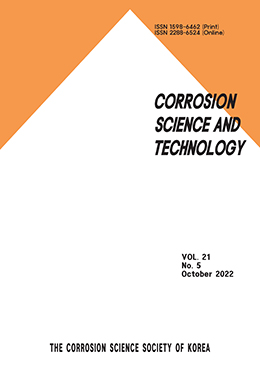Interest in electric vehicle is on the rise due to global eco-friendly policies. To improve the efficiency of electric vehicles, it is essential to reduce weights of components. Since electric vehicles have various electronic equipment, the research on stray current corrosion is required. In this research, a galvanostatic corrosion experiment was performed on 6061-T6 Al alloy for electric vehicle battery housing using chloride concentration and applied current density as variables in a solution simulating an acid rain environment. As a result of the experiment, when chloride concentration and applied current density were increased, corrosion damage became larger. In particular, pitting damage was dominant at an applied current density of 0.1 mA/㎠. Pitting damage over the entire surface was found at a current density of 1.0 mA/㎠. In conclusion, chloride concentration had a relatively large effect on localized corrosion. The applied current density had a great effect on uniform corrosion. However, in the case of applied current density, localized corrosion was also greatly affected by interaction with chloride.




